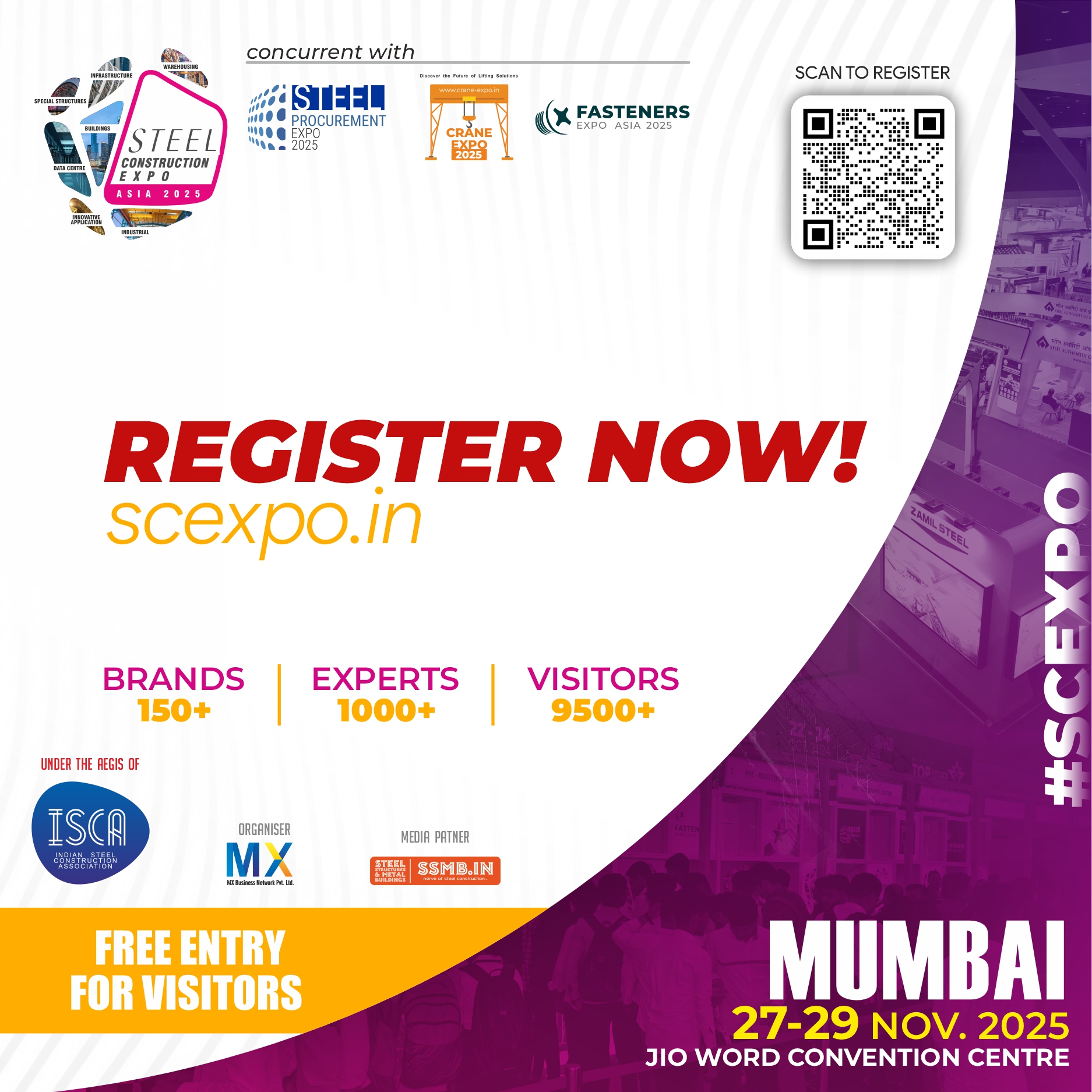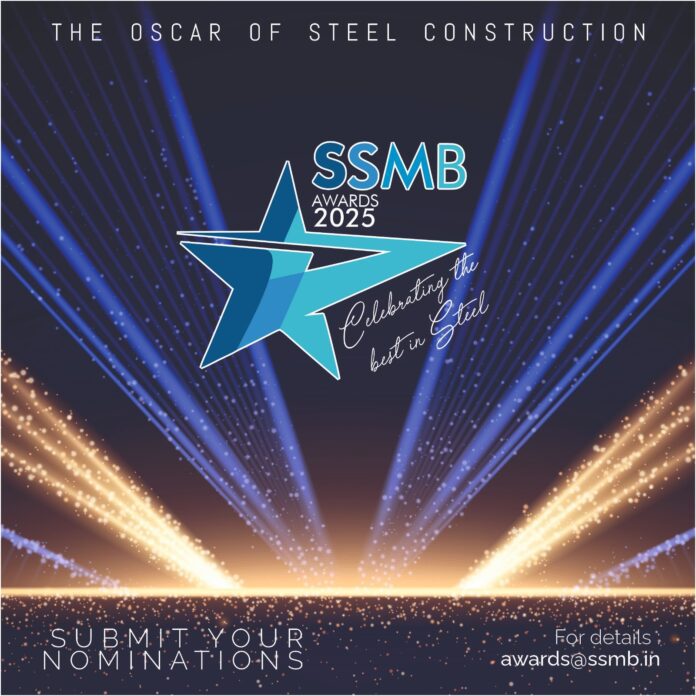Introduction:
GURURAJ THALI, Chairman & Managing Director of Innotech Engineering Consultants, is a structural engineer whose journey spans decades, continents, and countless innovations. From his early days as a site engineer to leading high-impact projects and developing patented systems, his story is one of resilience, adaptability, and unwavering passion for structural design. In this candid conversation with SSMB, Gururaj Thali reflects on his milestones, challenges, and the evolving role of steel in shaping India’s future skyline.
What first drew you to engineering, and why structural consulting?
Civil engineering was not my first choice, and I took it up reluctantly. But once I delved into it, I realised its immense scope and the creative responsibility it placed on me. Over time, I discovered that each project allowed me to create something unique, something that would last. That sense of purpose, coupled with my desire to innovate, naturally steered me toward structural consulting.
Can you share some key milestones in your professional journey?
I began as a site engineer at Bokaro Steel City but soon realised my passion lay in design. That led me to Semac Consultants Pvt Ltd in Bangalore as a design engineer, followed by a stint as Senior Designer with Kuwait Engineers Office. Returning to India in 1986, I founded Potential Service Consultants, which I led for over two decades before moving on to Innotech Consultants, where I have been for the last 13 years.
Innovation has been central to my journey. I introduced waffle slabs for multi-storey structures, developed voided slabs with thermocol inserts achieving spans of 20–25 m, and even patented a bracketed flat plate system recognised internationally. Receiving the American Concrete Institute Award in 2017 was a proud milestone — the first individual in India and the subcontinent to be so honoured.
“Innovation has always been my compass — from waffle slabs to patented systems, the goal was always to push the boundaries of possibility.”
What challenges have defined your career as a structural consultant?
Every project brings its own challenges. Designs may look similar at first glance, but true complexity reveals itself in balancing architectural intent with structural efficiency. Coordination is equally vital, aligning structure with MEP systems while ensuring space optimisation. My strength has always been in managing this integration, delivering solutions that are both practical and forward-looking.
How do you see the evolution of steel structures in India?
Steel has been around since the 1970s, particularly in industrial plants. But its real momentum in multi-storey buildings came only in the past decade. Labour shortages, quality concerns, and the need for speed pushed the shift toward steel and composite construction. Earlier, there was hesitation and scepticism, but today steel is increasingly valued for its efficiency, flexibility, and lifecycle advantages.
If you could introduce one transformative change in construction practices, what would it be?
Adaptability. Practices have evolved from wooden staging poles to precision-designed formwork, and they will keep evolving with technology. Those who embrace new tools, materials, and systems will stay relevant; those who don’t risk being left behind.
“Steel must be treated as steel, not RCC in disguise. It demands its own design language.”
What role has steel played in your projects?
Steel came into my work relatively later, but it added a new dimension. One highlight was South India’s tallest IT Twin Tower structural steel building for the Lulu Group in Kochi, where we used aerodynamic analysis to address wind loads. That project reaffirmed steel’s potential to meet complex design challenges with confidence.
Which steel project is closest to your heart?
The TCS project in Chennai. It stands as one of the most iconic steel structures in India, both in design and execution.
Is there an international steel structure that inspires you?
The Eiffel Tower. Built more than a century ago, yet it still stands as one of the most elegant and admired steel structures in the world. We need more such landmarks in India. Structures that inspire culturally as well as structurally.
How do you stay ahead in innovation and technology?
By staying alert. I was among the first to introduce structural welded fabrics in buildings, but convincing clients and collaborators was often the real challenge. Staying ahead is not just about adopting new technologies, it is about winning trust for them.
How do you approach collaboration with architects and fabricators?
Collaboration is key. Architects bring design vision, but I always emphasise that steel must be approached as steel, not by replicating RCC concepts. Steel demands its own design language, especially for facades. My role often involves guiding architects toward functional yet aesthetically striking solutions, even if it means being assertive at times.
“A loose connection in practice can undo the strongest concept on paper — collaboration is everything.”
Why do you think steel is more widely used abroad than in India?
Labour economics play a big role. Overseas, labour is scarce and expensive, so steel construction is more practical. In India, cheap labour and fluctuating steel prices slowed adoption. But this is changing as availability, awareness, and speed are driving steel’s acceptance in our construction ecosystem.
What advice would you give young engineers today?
First, love the subject. Too many shy away from structural engineering because they don’t see a clear career path. But demand is strong, and international companies are entering the market with excellent opportunities. If you are passionate and willing to learn, structural engineering offers one of the most rewarding careers you could hope for.
Engineer’s Snapshot:
Your College Name and Place: UVCE Bangalore & Indian Institute of Science
Years of Experience: 54 years
Your Biggest Influence or Mentor: BN Sridhara
Your Mantra for Success: Innovation
You Want to Be Remembered As: Someone who never gave up
Current Steel Projects You’re Working On (Name & Location):
MTB678 at ITPB, Bangalore
Mega truss Erection RMZ Ecoworld 33
Ramky Genpact, Hyderabad
ITPB Metro Bridge
Legacy Note
“Engineering is not about repeating formulas, but it is about shaping ideas into lasting structures. If you love the subject, stay curious, and embrace change, the profession will reward you with a lifetime of purpose.”
– Gururaj Thali
Innovations by Gururaj Thali:
- Waffle slabs for multi-storey structures.
- Voided slabs with lightweight inserts (20-25m spans).
- Bracketed Flat Plate System — patented and globally cited.
- Early adopter of structural welded fabrics in India.
Why It Matters:
Gururaj Thali’s story is more than a career journey, as it reflects the evolution of structural engineering in India. His innovations in slabs, patented systems, and steel applications highlight how engineering ingenuity can redefine design practice. For young professionals, his trajectory underscores the power of passion, adaptability, and collaboration in keeping pace with a rapidly changing industry.




